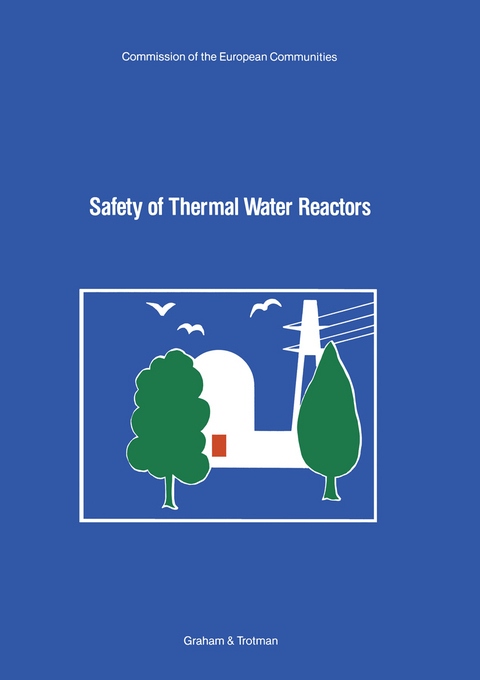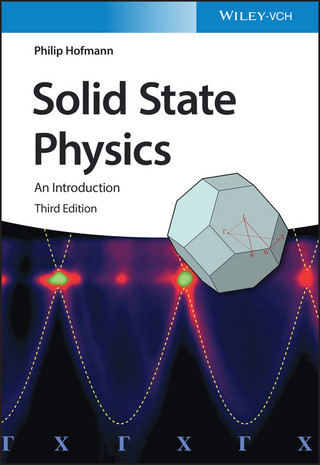
Safety of Thermal Water Reactors
Springer (Verlag)
978-94-010-8701-8 (ISBN)
Abbreviations.- Abbreviations.- Opening plenary session.- Welcome address.- The CEC Research Action Programme on the Development of Nuclear Fission..- The CEC Indirect Action Research Programme, Safety of Thermal Water Reactors (1979–1983): Aims, contents and implementation.- Parallel session Research Area A.- The loss of coolant accident (LOCA) and the functioning and performance of the emergency core cooling system (ECCS)..- Session A1.- Important thermohydraulic aspects during refilling and reflooding of an uncovered LWR core..- Studies on the effects of blockage upon LWR emergency core cooling systems..- Session A2.- Droplet dynamics and heat transfer in dispersed two phase flow..- An experimental investigation of the effect of clad ballooning on the effectiveness of PWR emergency core cooling.- Out of pile ballooning and bursting tests on Zircaloy cladding rods with direct and indirect heating..- General Discussion on sessions A1 and A2.- Session A3.- 2D effects in the core during the reflooding phase of a LOCA..- Fluid dynamic effects in the fuel element top nozzle area during refilling and reflooding..- Study of rewetting and quench phenomena by single pin out-of-pile experiments, with special emphasis on the effect of pin composition..- Heat transfer to a dispersed two-phase flow and detailed quench front velocity research.- Session A4.- Rewetting propagation over Zircaloy under bottom flooding conditions..- The Role of Experiments in The Development and Qualification of Thermalhydraulic.Codes, As Experienced in The Development of The CATHARE Code.- Parallel sessions Research Area B.- The protection of nuclear power plants against external gas cloud explosions.- Session B1.- Large-scale field trials on dense vapour dispersion..- Aspects of the dispersion ofdenser-than-air vapours relevant to gas cloud explosions..- Session B2.- Verification of heavy gas models on the basis of large-scale experiments.- Computer processing of visual records from the Thorney Island large scale gas trials..- Transition from slow deflagration to detonation..- On the propagation of the pressure pulse due to an unconfined gas cloud explosion. Theoretical analysis..- Session B3.- Gas cloud explosions and their effect on nuclear power plant, basic development of explosion codes..- Validation of blast simulation codes and experimental investigation of flame propagation in the presence of obstacles..- Characterization of the pressure field induced by the explosions in air of a hydrocarbon-air mixture, with slow deflagration or fast deflagration..- Experimental investigation of the acceleration of deflagration in wake flow..- Session B4.- Calculation of overpressures on the buildings of a power plant due to the passage of a shock wave caused by an accidental explosion..- Blast wave propagation and the influence of obstacles..- Calculation of the wall pressure field generated on a group of buildings by an external explosion..- Recent results of experimental studies on the transition of a deflagration into a detonation and some aspects for the transposition of these results to confined explosions..- Parallel sessions Research Area C.- The release and distribution of radioactive fission products in the atmosphere following a reactor accident..- Session C1.- Review of specific effects in atmospheric dispersion calculations..- The effects of buildings on low level atmospheric discharges..- Session C2.- Predicting lift-off of major self-heating releases under the influence of a building..- Development of an integral model of a radioactive jet released accidentally from a nuclear reactor..- Development of a prototype mesoscale computer model, incorporating treatment of topography..- Finite element three-dimensional formulation of a variational procedure of wind field adjustment over a domain of complex topography..- Description of a recent nordic mesoscale dispersion experiment over a land-water-land area (the Oresund Experiment)..- Session C3.- Wind tunnel modelling of turbulent diffusion of pollutant puffs..- Physical model of the dispersion of a radioactive contaminant in the atmosphere above a “heat island”..- Wind Tunnel Simulation of Atmospheric Dispersion in Stable Conditions at a Real Site..- Assessment of the dispersion of fission in the atmosphere following a reactor accident under meteorological conditions of low wind speed..- Session C4.- Local-scale atmospheric diffusion at a coastal site, in the presence of breeze effect..- Sensitivity, applicability and validation of bi-Gaussian off-and on-line models for the evaluation of the consequences of accidental releases in nuclear facilities..- Interlaboratory comparison of SF6 — Determination used within the framework of tracer releases..- Estimates of uncertainty in dispersion modelling..- Concluding plenary session.- Overview and conclusions on the results obtained in research Area A: The loss of coolant accident (LOCA) and the functioning and performance of the emergency core cooling system (ECCS)..- Overview and conclusions on the results obtained in research Area B: The protection of nuclear power plants against external gas cloud explosions..- Overview and conclusions on the results obtained in research Area C: The release and distribution of radioative fission products in the atmosphere following a reactor accident..- The CEC — Research ActionProgramme on Reactor Safety (1984–1981).- Developments in Nuclear Safety Research..- Concluding panel.- Evaluation of the results of the present Indirect Action Research Programme Safety of LWR. State-of-the-art in LWR Safety Research. Identification of useful topics for future research, with special consideration of Conmnunity programmes..- Closing address.- List of participants.- Index of authors.
| Zusatzinfo | XI, 613 p. |
|---|---|
| Verlagsort | Dordrecht |
| Sprache | englisch |
| Maße | 210 x 297 mm |
| Themenwelt | Naturwissenschaften ► Physik / Astronomie ► Atom- / Kern- / Molekularphysik |
| Technik ► Elektrotechnik / Energietechnik | |
| Wirtschaft ► Betriebswirtschaft / Management | |
| ISBN-10 | 94-010-8701-6 / 9401087016 |
| ISBN-13 | 978-94-010-8701-8 / 9789401087018 |
| Zustand | Neuware |
| Haben Sie eine Frage zum Produkt? |
aus dem Bereich


